The Blackboard
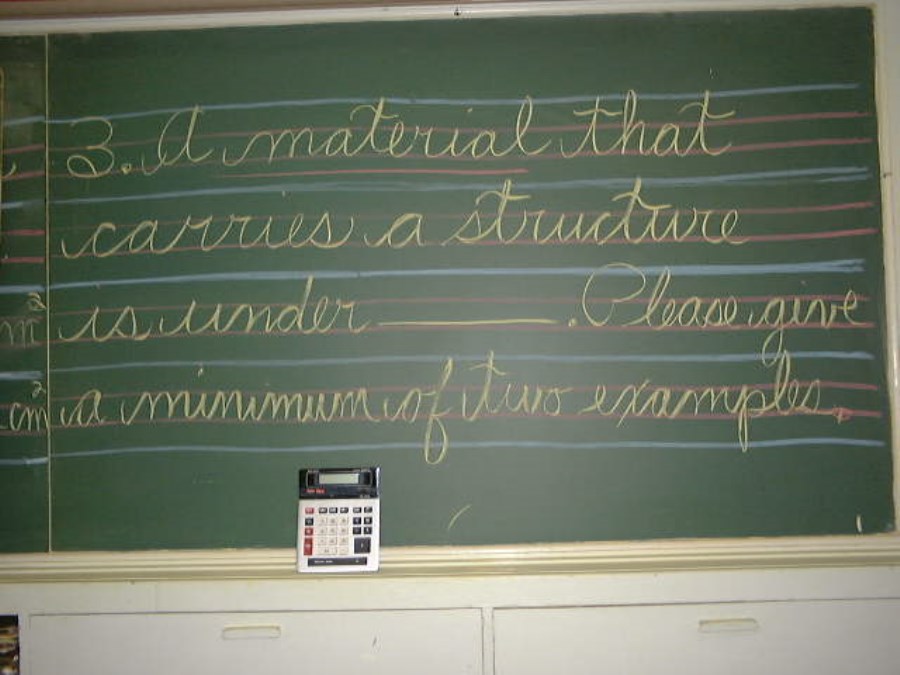
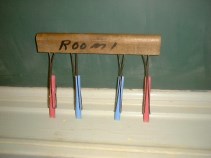
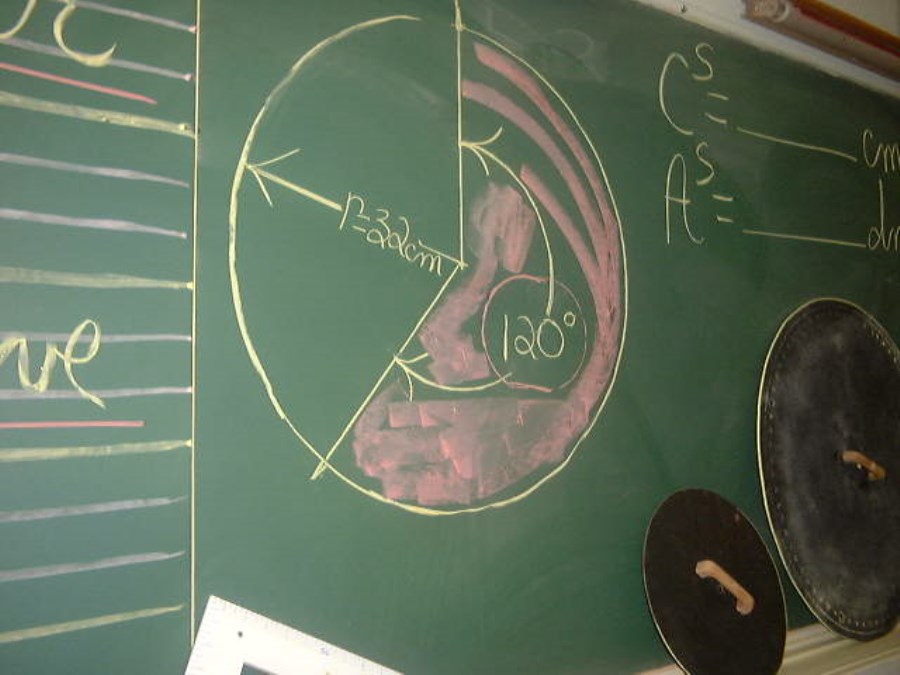
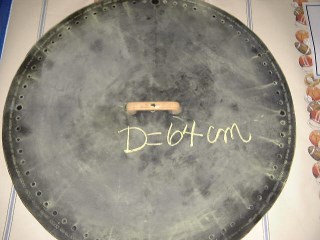
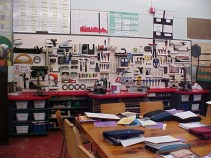
The blackboard, also known as a chalkboard, has been in use in the classroom for over one hundred years. As an elementary classroom teacher, the blackboard was a great place to teach a lesson.
I had two, full size, very high quality slate blackboards in my classroom. Unfortunately, I had no other choice, because of limited classroom wall space, but to cover one of my boards with 2, (2cm thick 4 X 8 plywood sheets.
This framed, neutrally colored board, gave me a large area to organize my tools and directly under and in front of it, construct a shallow surface workbench for power tools, storage shelves, and most importantly, my design cabinet. On the tool rack, rested two silhouetted modified cursive writing guides.
Two centuries ago, a flat piece of slate was an individual student’s first blackboard. Slate, a fine-grained, metamorphic rock, was also used as a roofing shingle.
This rock, which can change its form and can be split into smooth, flat pieces, was usually held in a wood frame when used as a blackboard. The small, slate blackboard, was an elementary student’s sole means of learning how to write. Paper, pen and ink were, for the most part, too messy and expensive for a young student to use in the classroom. My students found that fact fascinating.
Sticks of calcium carbonate, also known as chalk, were used to write on the slate boards. In the past, chalk produced a lot of dust, but over the years, improvements in the manufacturing process of chalk, have made it almost dustless.
In a normal school year, I ordered three, high quality, large boxes of yellow chalk, (one box equals 144 pieces), one large box of mixed colored chalk and a small box of black chalk. Generally, a large box of chalk should cost approximately $25.00.
I had two, full size, very high quality slate blackboards in my classroom. Unfortunately, I had no other choice, because of limited classroom wall space, but to cover one of my boards with 2, (2cm thick 4 X 8 plywood sheets.
This framed, neutrally colored board, gave me a large area to organize my tools and directly under and in front of it, construct a shallow surface workbench for power tools, storage shelves, and most importantly, my design cabinet. On the tool rack, rested two silhouetted modified cursive writing guides.
Two centuries ago, a flat piece of slate was an individual student’s first blackboard. Slate, a fine-grained, metamorphic rock, was also used as a roofing shingle.
This rock, which can change its form and can be split into smooth, flat pieces, was usually held in a wood frame when used as a blackboard. The small, slate blackboard, was an elementary student’s sole means of learning how to write. Paper, pen and ink were, for the most part, too messy and expensive for a young student to use in the classroom. My students found that fact fascinating.
Sticks of calcium carbonate, also known as chalk, were used to write on the slate boards. In the past, chalk produced a lot of dust, but over the years, improvements in the manufacturing process of chalk, have made it almost dustless.
In a normal school year, I ordered three, high quality, large boxes of yellow chalk, (one box equals 144 pieces), one large box of mixed colored chalk and a small box of black chalk. Generally, a large box of chalk should cost approximately $25.00.
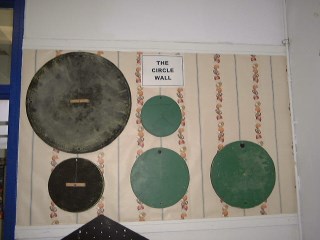
Along with my classroom’s blackboard, I had over 500 specialized blackboards. These blackboards were constructed using 3 or 6mm tempered hardboard. Mostly they were used to teach math and language arts skills.
After the construction was completed, which included sanding the edges with fine sandpaper, I applied a chalkboard surface using blackboard paint.
My most complicated design was a circular protractor blackboard approximately 64 cm in diameter. If used as a trundle wheel , one revolution would equal 2 meters.
This blackboard was used as a large circular protractor with a large handle in the middle. This made it easy to hold it against a surface. It was divided into 360 parts. Small, medium and large holes were drilled around the circumference to designate degrees. The more important degree divisions, such as 180 degrees, were drilled with very large holes.
Not only did I use it on a blackboard surface, I also laid it out on the classroom floor, and used it in conjunction with a modified chalk holding trammel point a center trammel point and a meter stick or a long piece of wood.
One of my students favourite places to use the trammel points was outside on the pavement, designing all kinds of triangles, squares, hexagons, and octagons and filling in the spaces with sidewalk chalk.
The circular blackboards were exciting tools for my students to use and one of the most useful teaching tools I invented.
Design and Make a Blackboard
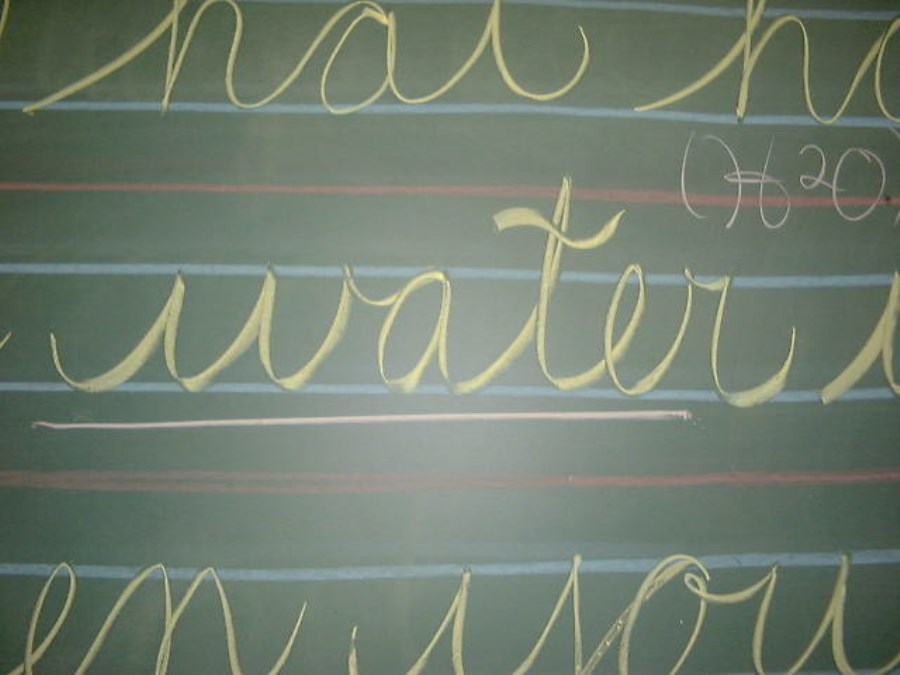
Cursive Letters and Script Writing
Organizing my classroom’s blackboard precisely at the end of each teaching day became one of my daily priorities. Most of the time, selected students and I maintained the classroom’s blackboard; that is organizing, erasing and cleaning its surface.
I controlled the board because work laid out by me, at the end of each teaching day, except Friday, set my students work in motion the next day. I asked the caretakers in the school to wash the boards only on Fridays.
Before I left the classroom, at the end of the day, I outlined my student’s following day’s work. This work consisted of two parts. Because I taught cursive writing to the class, I modified a music chalkboard staff liner by simply cutting out the middle chalk holder. Then I moved all the wires until they were equal distance from each other.
The top quarter of the board, was lined with a cursive letter guide tool. The wire chalk holder's colored chalk matched my student's exercise notebook. I listed the spelling words for the day.
I inserted red chalk into the two outside chalk holder fingers and blue on the inside ones. Using my eye, I held up the holder and aligned the ends of the chalk so that they would make equal contact with the blackboard surface.
This tool allowed me to draw four, easy to see, parallel lines horizontally across the top of the board . The tool and colored lines worked exceptionally well for me. After a month or two of daily practice, my students could write using cursive letters transformed into script writing. Teaching how to form cursive letters is one of the greatest skills you can teach a student.
The first word on the board was the keyword. It generated the remaining three to five words. Students knew that these words, written in script writing, which they were required to write carefully in their notebook (5 times) had a high probability of being on Friday’s spelling test.
The bottom three quarters of the board was divided into six large squares. Each square had one math or science problem and on the top left side of the square, a student's class number was assigned to each square.
Our day always started with assigned students having 15 minutes to solve their individually assigned problems and explain their solution to the class. I learned this technique from my grade 10 geometry teacher.
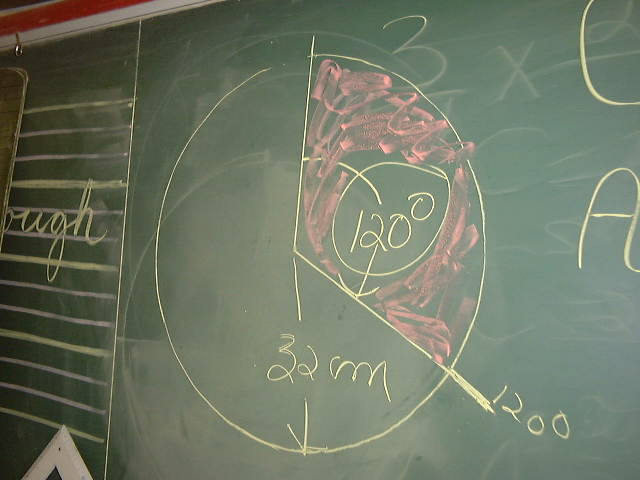
This was a portable chalk board I used to teach small group math.